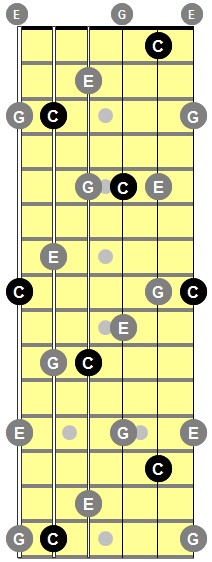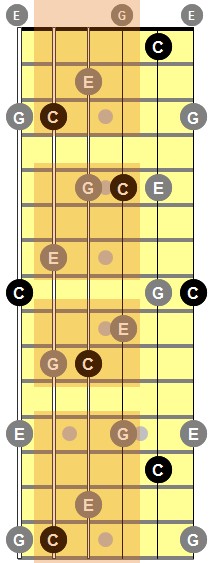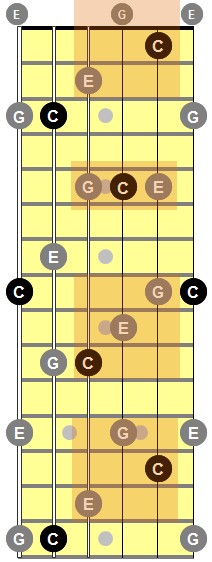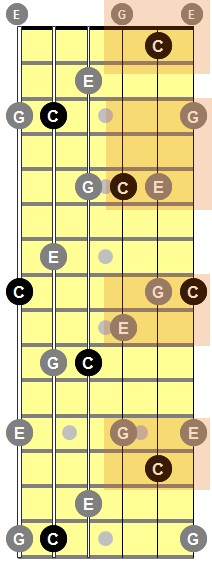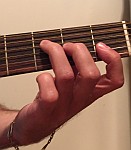Guitar Chord Theory: How to Build a Major Chord Part 2
In our previous post, we looked at the formula for building a major chord. Here’s the link in case you missed it: How Major Chords are Built on Guitar Part 1.
Now that you know how major chords are built, we will look at how to apply the formulas to actual chord fingerings on the guitar.
Major chords are built by taking the 1st, 3rd and 5th notes from the major scale.
C Major Scale:
C D E F G A B
1 2 3 4 5 6 7
The notes in a C major chord are C-E-G.
To play the C major chord all you do is locate the notes C-E-G on the fretboard.
You can play any combination of the notes C-E-G, and you will have a C major chord.
Usually when you play guitar, you will want to use chords that use more than three strings. This means that some chord tones would need to be doubled or even tripled.
Below you will see some common chord voicings for C major. The first voicing is a C major barre chord that has two root notes, two 5ths and one 3rd. The next voicing, which uses some open strings, consists of two root notes (C), two 3rds (E) and one 5th (G). The third voicing shown below is played on the eighth fret. This C major barre chord has three root notes, two 5ths and one 3rd.
Knowing multiple voicings for a chord will give you some easy ways to add variety to your rhythm guitar playing.

